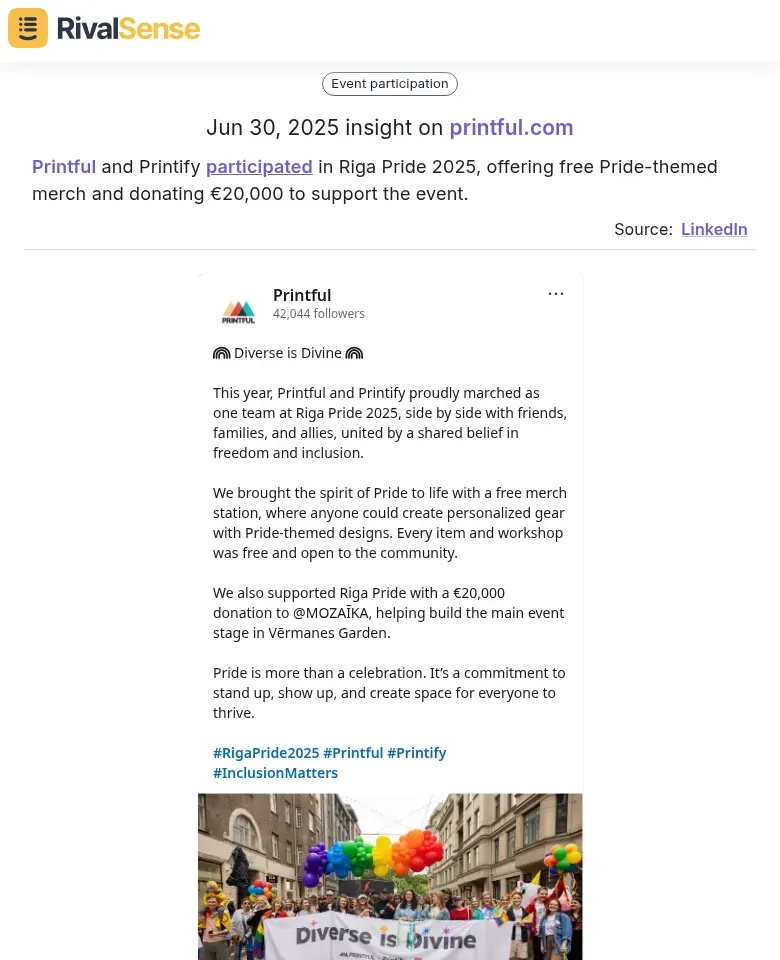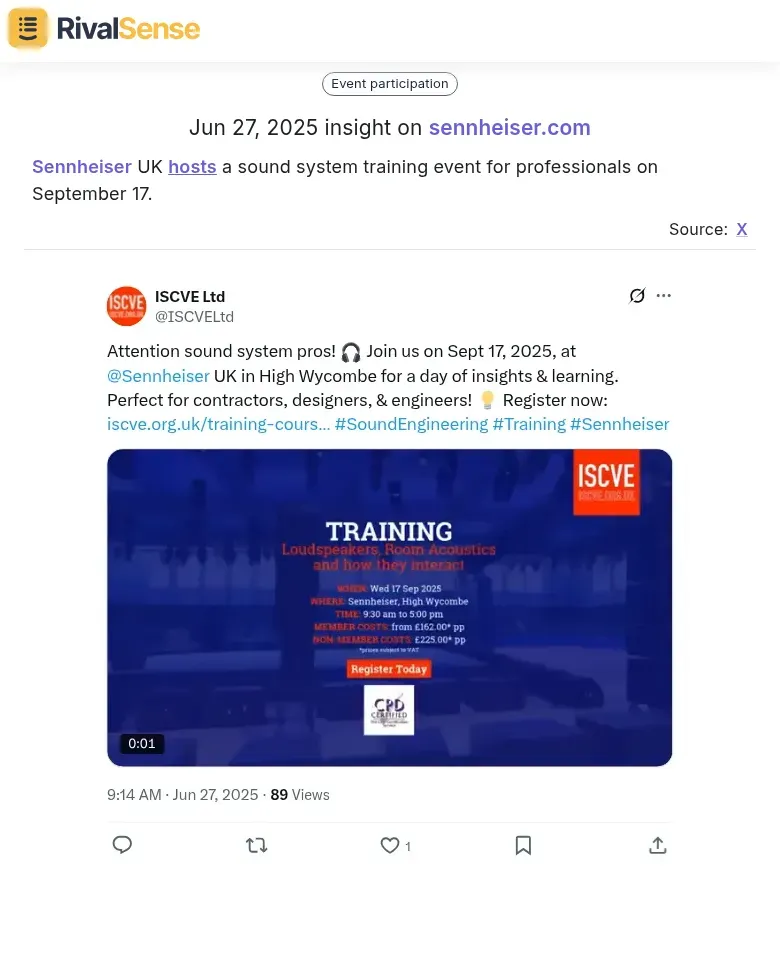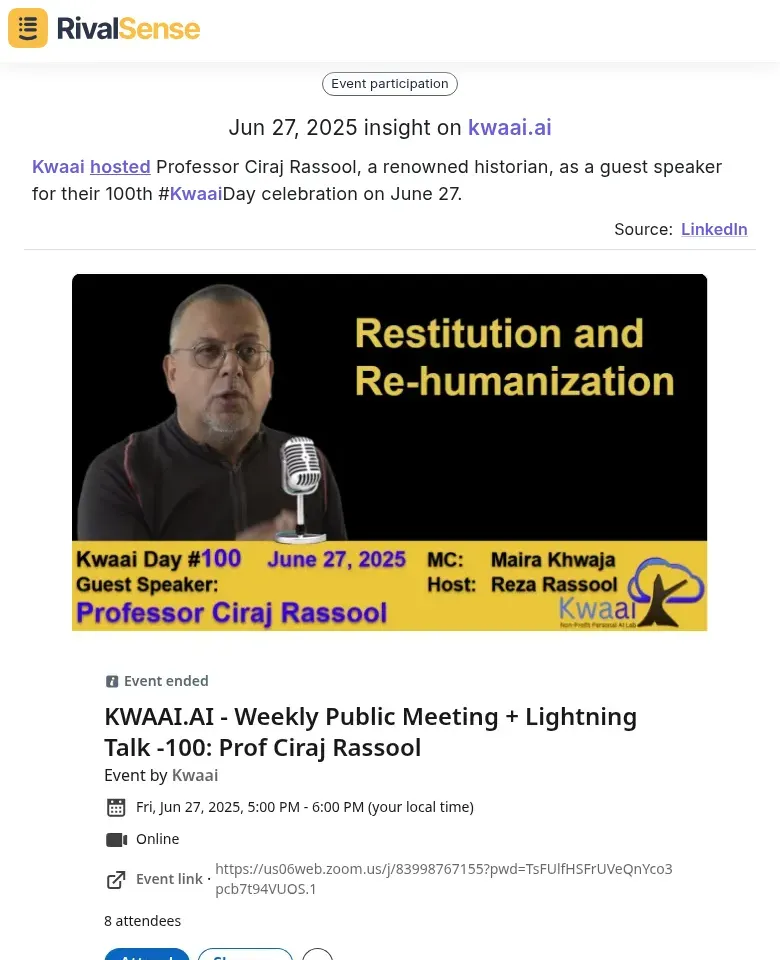Leveraging Competitor Insights for Smarter Event Participation
In the fast-paced world of B2B marketing, event participation is more than just showing up—it's about making strategic moves that position your brand ahead of competitors. Understanding the strategic value of analyzing competitor event participation is the first step toward smarter engagement. By tracking which events your rivals attend, sponsor, or speak at, you gain insights into their market priorities and investment areas. This intelligence allows you to align or differentiate your event strategy effectively.
Competitor insights can also reveal broader market trends and audience preferences. For instance, if multiple competitors flock to a particular industry conference, it might signal emerging opportunities or shifts in customer interests. Use this data to tailor your messaging or explore untapped events that competitors overlook.
Moreover, competitor analysis helps identify gaps in your own event strategy. Are competitors engaging with niche audiences you've ignored? Are they leveraging virtual events while you stick to traditional formats? Practical steps to leverage these insights include:
✅ Competitor Event Tracker: Monitor participation patterns through a centralized dashboard
✅ Post-Event Analysis: Review session recordings and social buzz to gauge audience engagement
✅ Gap Identification: Evaluate one competitor-prioritized event for potential adoption
By integrating these insights, you transform participation into a strategic advantage.
Aligning with Social Causes for Brand Impact
Corporate social responsibility is no longer optional—it's a strategic imperative that builds trust and community connection. Aligning your brand with social causes during events boosts reputation while resonating with purpose-driven audiences. When executed authentically, these initiatives create lasting emotional bonds with stakeholders.
Tracking competitor cause-related activities reveals how industry leaders build goodwill. For example, RivalSense recently detected that Printful and Printify participated in Riga Pride 2025 by offering free Pride-themed merchandise and donating €20,000 to support the event. Such insights are valuable because they demonstrate how competitors build brand affinity through community investment—helping you benchmark and innovate your own social initiatives.

Actionable framework:
- Cause Selection: Choose initiatives aligning with your core values and audience
- Value Amplification: Donate proceeds or match attendee contributions
- Authentic Storytelling: Highlight impact without excessive self-promotion
- Impact Measurement: Track perception shifts through surveys and sentiment analysis
✅ Success Checklist:
- Research brand-aligned causes
- Partner with reputable organizations
- Set clear donation/awareness goals
- Share outcomes transparently
💡 Pro Tip: Consistent, modest initiatives often outperform one-time grand gestures in building credibility.
Educational Events as Competitive Differentiation
Training and educational events position your brand as an industry authority while solving real customer challenges. Unlike traditional marketing, they deliver tangible value that fosters trust and loyalty. When executed well, these events create communities of engaged advocates who view your brand as a knowledge partner.
Monitoring competitor educational initiatives reveals skill gaps they're addressing and engagement tactics worth emulating. RivalSense identified Sennheiser UK hosting a professional sound system training event on September 17—an insight valuable for understanding how competitors establish technical authority and attract niche audiences through specialized knowledge sharing.

Implementation blueprint:
🔧 Establish Authority: Host workshops on pressing industry challenges (e.g., SaaS optimization masterclasses)
🔧 Interactive Design: Incorporate live demos, Q&A sessions, and case study workshops
🔧 Relationship Nurturing: Follow up with personalized resources and community-building
✅ Optimization Checklist:
- Identify audience pain points through surveys
- Co-host with industry experts
- Analyze engagement metrics for improvement
- Repurpose content into post-event resources
Strategic Speaker Partnerships
Influential speakers act as credibility multipliers, drawing larger audiences and generating organic buzz through their networks. Their expertise elevates your event from transactional to transformational, creating memorable experiences that attendees associate with your brand.
Tracking competitor speaker choices reveals which thought leaders resonate with your target audience. For instance, RivalSense observed Kwaai featuring historian Professor Ciraj Rassool at their 100th #KwaaiDay celebration—an insight valuable for identifying high-impact collaborators and understanding topical trends in your industry.

Execution roadmap:
- Target Identification: Use social listening to find trending topics and aligned influencers
- Personalized Outreach: Highlight mutual benefits in collaboration pitches
- Amplified Promotion: Co-create teaser content and leverage speaker networks
- Extended Engagement: Facilitate Q&A sessions and post-event networking
- Relationship Maintenance: Publicly acknowledge contributions and share highlights
💡 Critical Success Factor: Choose speakers whose expertise complements rather than overshadows your brand narrative.
Operationalizing Competitor Intelligence
Systematically integrating competitor insights transforms reactive tactics into proactive strategy. This approach turns competitive monitoring into a continuous improvement engine for your event portfolio, ensuring every participation decision delivers maximum ROI.
Begin by automating data collection on competitor event calendars, sponsorships, and speaking engagements. Analyze patterns in their industry focus, audience targeting, and engagement tactics to identify whitespace opportunities. For example, if competitors focus on product demos, counter with hands-on workshops for differentiation.
Implementation framework:
| Step | Action | Tool Example |
|---|---|---|
| 1. Data Collection | Track competitor events & activities | RivalSense automated tracking |
| 2. Pattern Analysis | Identify geographic/thematic concentrations | Spreadsheet trend mapping |
| 3. Tactical Adaptation | Develop counter-strategies for competitor gaps | SWOT analysis |
| 4. Performance Benchmarking | Measure lead gen & engagement against rivals | Social listening tools |
✅ Pro Tips:
- Attend competitor events anonymously to observe firsthand
- Maintain a live competitor event database
- Conduct quarterly strategy debriefs
Conclusion: From Insight to Dominance
Strategic event participation separates market leaders from followers. By systematically analyzing competitor activities—from cause partnerships to speaker selections—you transform intelligence into actionable advantages. The key lies not in imitation, but in identifying whitespace opportunities where your unique value proposition shines brightest.
Begin by auditing your competitors' last quarter of event participation. Identify one strategic gap to exploit in your next event cycle, whether through cause alignment, educational depth, or speaker impact. Measure results against competitor benchmarks to refine future approaches.
Ready to decode your competitors' playbook? 👉 Try RivalSense Free and get your first automated competitor report today. Track product launches, pricing changes, event strategies, and market movements—all delivered in actionable weekly insights.
📚 Read more
👉 Decoding Geotab's Marketplace Expansion: Strategic Insights & Action Steps
👉 Mastering Market Entry Competitive Analysis: A Strategic Guide for Business Leaders
👉 5 Quick Hacks for Strategic Competitive Monitoring in Legal Compliance
👉 How Mobilly's Jūrmala Move Spurred Rival Strategy
👉 Unlock Strategic Wins: How Tracking Competitor Website Changes Fuels Business Growth
